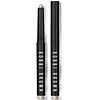What's inside
What's inside
 Key Ingredients
Key Ingredients

 Benefits
Benefits

 Concerns
Concerns

 Ingredients Side-by-side
Ingredients Side-by-side

Dimethicone
EmollientSynthetic Wax
AbrasiveSilica
AbrasiveStearyl Dimethicone
EmollientCaprylic/Capric Triglyceride
MaskingTrimethylsiloxysilicate/Dimethiconol Crosspolymer
Mica
Cosmetic ColorantOctadecene
SolventDimethicone/Vinyl Dimethicone Crosspolymer
Skin ConditioningPentaerythrityl Tetra-Di-T-Butyl Hydroxyhydrocinnamate
AntioxidantTocopheryl Acetate
AntioxidantPanthenol
Skin ConditioningChamomilla Recutita Flower Extract
MaskingIsoceteth-10
EmulsifyingCI 77891
Cosmetic ColorantCI 42090
Cosmetic ColorantIron Oxides
CI 77492
Cosmetic ColorantCI 77499
Cosmetic ColorantDimethicone, Synthetic Wax, Silica, Stearyl Dimethicone, Caprylic/Capric Triglyceride, Trimethylsiloxysilicate/Dimethiconol Crosspolymer, Mica, Octadecene, Dimethicone/Vinyl Dimethicone Crosspolymer, Pentaerythrityl Tetra-Di-T-Butyl Hydroxyhydrocinnamate, Tocopheryl Acetate, Panthenol, Chamomilla Recutita Flower Extract, Isoceteth-10, CI 77891, CI 42090, Iron Oxides, CI 77492, CI 77499
Cyclopentasiloxane
EmollientTrimethylsiloxysilicate
EmollientPolyethylene
AbrasiveLauroyl Lysine
Skin ConditioningOzokerite
Emulsion StabilisingOctyldodecanol
EmollientSynthetic Beeswax
Emulsion StabilisingAscorbyl Palmitate
AntioxidantTocopherol
AntioxidantLecithin
EmollientDisteardimonium Hectorite
StabilisingPropylene Carbonate
SolventCalcium Aluminum Borosilicate
Synthetic Fluorphlogopite
Calcium Sodium Borosilicate
Citric Acid
BufferingSilica
AbrasiveTin Oxide
AbrasiveMica
Cosmetic ColorantCI 77891
Cosmetic ColorantCI 77492
Cosmetic ColorantCI 77491
Cosmetic ColorantCI 77499
Cosmetic ColorantCI 77742
Cosmetic ColorantCI 19140
Cosmetic ColorantCI 77288
Cosmetic ColorantCI 77289
Cosmetic ColorantCI 75470
Cosmetic ColorantCI 77163
Cosmetic ColorantCI 77510
Cosmetic ColorantCI 77000
Cosmetic ColorantCI 42090
Cosmetic ColorantCI 77007
Cosmetic ColorantCyclopentasiloxane, Trimethylsiloxysilicate, Polyethylene, Lauroyl Lysine, Ozokerite, Octyldodecanol, Synthetic Beeswax, Ascorbyl Palmitate, Tocopherol, Lecithin, Disteardimonium Hectorite, Propylene Carbonate, Calcium Aluminum Borosilicate, Synthetic Fluorphlogopite, Calcium Sodium Borosilicate, Citric Acid, Silica, Tin Oxide, Mica, CI 77891, CI 77492, CI 77491, CI 77499, CI 77742, CI 19140, CI 77288, CI 77289, CI 75470, CI 77163, CI 77510, CI 77000, CI 42090, CI 77007
 Reviews
Reviews

Ingredients Explained
These ingredients are found in both products.
Ingredients higher up in an ingredient list are typically present in a larger amount.
Ci 42090 is a synthetic dye created from petroleum. It is used to give a bright blue color to cosmetics, medicine, and food.
Ci 77492 is also hydrated iron III oxide. It's sole purpose is to give a yellow hue to products.
Iron III oxides are classified as inorganic chemicals for coloring.
Synthetically created Ci 77492 is considered safer than those naturally found. This is because the synthetically created version may contain less impurities. Iron oxides are generally non-toxic and non-allergenic.
Learn more about CI 77492Ci 77499 is also hydrated iron III oxide. It is created from mixing red and black iron oxides. This helps give shades of darkness to a product.
Iron III oxides are classified as inorganic chemicals for coloring.
Ci 77891 is a white pigment from Titanium dioxide. It is naturally found in minerals such as rutile and ilmenite.
It's main function is to add a white color to cosmetics. It can also be mixed with other colors to create different shades.
Ci 77891 is commonly found in sunscreens due to its ability to block UV rays.
Learn more about CI 77891Mica is a naturally occurring mineral used to add shimmer and color in cosmetics. It can also help improve the texture of a product or give it an opaque, white/silver color.
Serecite is the name for very fine but ragged grains of mica.
This ingredient is often coated with metal oxides like titanium dioxide. Trace amounts of heavy metals may be found in mica, but these metals are not harmful in our personal products.
Mica has been used since prehistoric times throughout the world. Ancient Egyptian, Indian, Greek, Roman, Aztec, and Chinese civilizations have used mica.
Learn more about MicaSilica, also known as silicon dioxide, is a naturally occurring mineral. It is used as a fine, spherical, and porous powder in cosmetics.
Though it has exfoliant properties, the function of silica varies depending on the product.
The unique structure of silica enhances the spreadability and adds smoothness, making it a great texture enhancer.
It is also used as an active carrier, emulsifier, and mattifier due to its ability to absorb excess oil.
In some products, tiny microneedles called spicules are made from silica or hydrolyzed sponge. When you rub them in, they lightly polish away dead skin layers and enhance the penetration of active ingredients.
Learn more about Silica